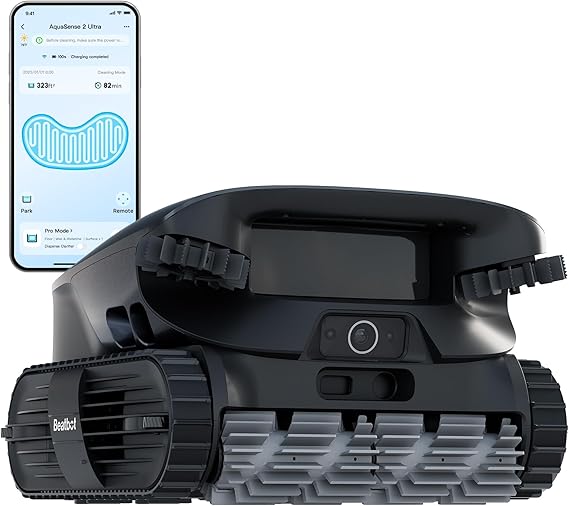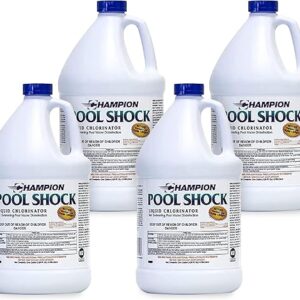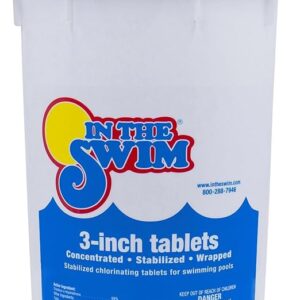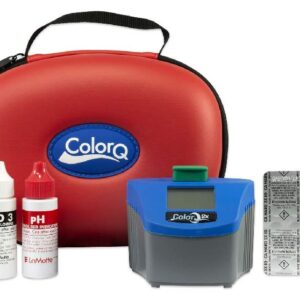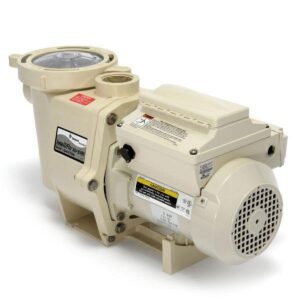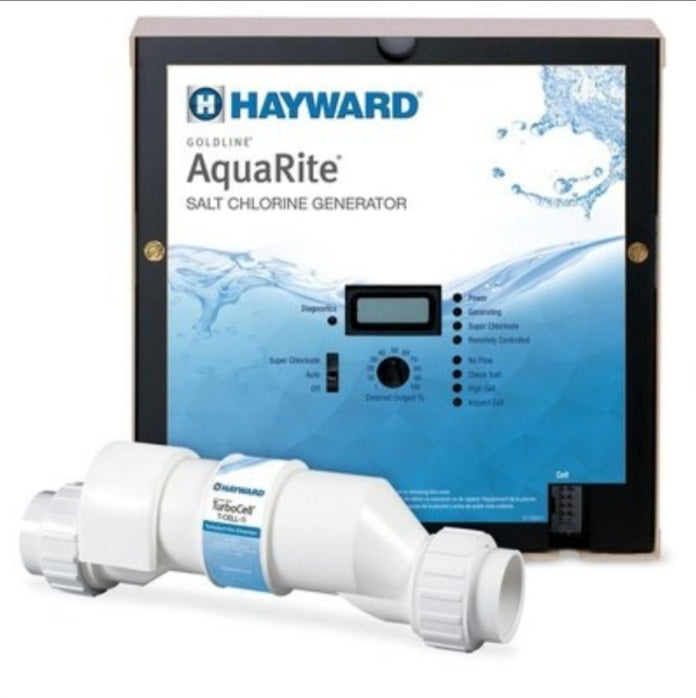How to Clear Cloudy Pool Water Fast: Fix Murky Swimming Pools in 3 Easy Steps
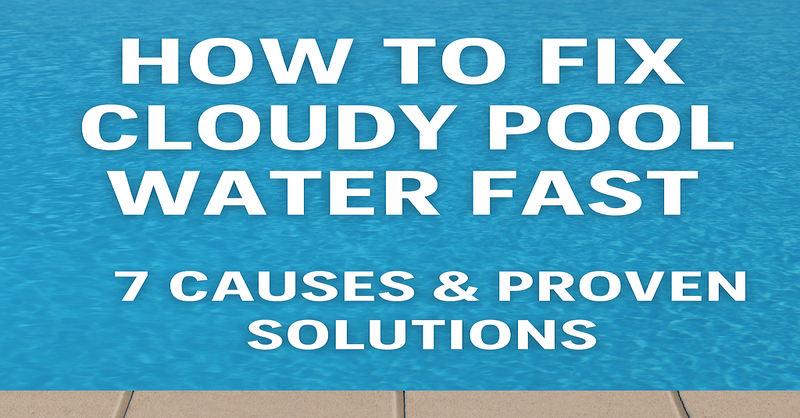
Cloudy swimming pool water isn’t just unpleasant to look at—it’s often a sign that something’s wrong with your pool chemistry or filtration system. Whether your water looks milky, dull, or completely murky, the first step to clearing a cloudy pool is identifying the exact cause.
In this expert guide, you’ll learn the top 7 causes of cloudy pool water and how to fix each one—fast and effectively. The most common causes are low free chlorine levels, particles or debris, a poor filtration system, Ammonia, young algae, and mineral deposits.
This guide includes accurate chemical ranges and trusted pool maintenance products to get your water crystal clear.
Most Loved Cordless Pool Cleaner: Aiper Scuba S1 Cordless Robotic Pool Vacuum Cleaner: Cleaning Schedule, Smart Navigation, Wall, Floor, & Waterline Cleaning, Suitable for all Pools Up to 1,600 sq.ft
Step 1: Identify the Cause of Cloudy Swimming Pool Water
Before treating your pool, test your water using a reliable digital pool test kit like LaMotte ColorQ 2X Pro or Taylor K2006. Chemicals are the most common cause of cloudy pool water. Measure the following:
- Free Chlorine (FC): Non-Saltwater Pool: 2–4 ppm, Saltwater Pool: 3–5 ppm
- Cyanuric Acid (CYA): Non-Saltwater Pool: 30–50 ppm, Saltwater Pool: 60–80 ppm
- pH: Both Non-Saltwater & Saltwater Pools: 7.2–7.8 (Ideal: 7.4–7.6)
- Total Alkalinity (TA): Non-Saltwater Pool: 80–120 ppm, Saltwater Pool: 60–80 ppm
- Calcium Hardness (CH): Non-Saltwater Pool: 200–400 ppm, Saltwater Pool: 200–400 ppm (Ideal: 250–300 ppm for both)
- Combined Chlorine (CC): Both Non-Saltwater & Saltwater Pools: Less than 0.5 ppm
(If higher: shock the pool) - Phosphates and other minerals: Both Pool Types: Phosphates: Below 100 ppb (ideally undetectable), Copper/Iron: 0 ppm (should not be present)
- Saltwater Pool Specific: Salt level: 2,700–3,400 ppm (check manufacturer’s recommendation)
These readings will help you determine if chemicals are causing the cloudiness. The most common culprits are listed below in step 2.
Step 2: Fix the Specific Cause of Cloudy Swimming Pool Water
1. Low Free Chlorine (FC).
Low FC is the leading cause of cloudy pool water. When FC drops too low, it becomes ineffective, and chloramine levels increase, causing bacteria to multiply and turn water milky or murky. This is especially common in hot weather or after heavy pool use.
Recommended FC Levels:
- Non-saltwater pool: Maintain FC at 3 ppm for 40 ppm CYA
- Saltwater pool:
- 3 ppm FC for 70 ppm CYA
- 4 ppm FC for 80 ppm CYA
If your FC is below these levels:
- Shock the pool using liquid chlorine. You can use chlorine tablets or chlorine granules. However, we always recommend using sodium hypochlorite or liquid chlorine. This is because liquid chlorine is fast acting and doesn’t rapidly escalate calcium and Cyanuric acid levels in a swimming pool. Read more information on how to shock a swimming pool and the best pool shock to use.
- If using a Saltwater Chlorine Generator (SWCG) and it’s already running at high output, turn it off temporarily and manually add chlorine instead.
👉 Related Article: Saltwater Swimming Pool Maintenance Solutions
2. Foreign Particles or Debris
Dirt, leaves, pollen, and other debris can make your water dull or hazy. Always confirm your FC is correct before assuming debris is the cause.
To clear debris quickly:
- Use a Pool Clarifier to bind small particles and remove them through the filter.
- Backwash the filter thoroughly after using a clarifier.
- Alternatively, use Pool Flocculant to settle particles to the bottom, then vacuum manually.
👉 Related Product: Beatbot AquaSense Cordless Robotic Pool Vacuum Cleaner – for above-ground and inground pools up to 2,260 sq. ft.
3. Ammonia Contamination
Cloudy swimming pool water caused by ammonia is difficult to clear because you will need a lot of chlorine. Ammonia is caused by bacteria that find their way into your pool due to low FC levels. Ammonia feeds on Cyanuric acid, which is why your Cyanuric acid level will be 0 ppm or near zero.
If FC drops rapidly after adding chlorine and doesn’t hold, you may have ammonia in your pool. Symptoms include:
- FC won’t rise past 0–1 ppm
- Extremely cloudy water
- CYA near 0 ppm
- Very high Combined Chlorine (CC)
To remove ammonia:
- Raise FC to 12 ppm (for 30 ppm CYA) or 16 ppm (for 40 ppm CYA) using liquid chlorine.
- Test every 15 minutes. If FC drops below 6 ppm (30 CYA) or 8 ppm (40 CYA), raise it again.
- Repeat until FC holds for at least 15–20 minutes at target level.
This may take 1–3 days, depending on ammonia levels. Leave FC to come down to 3 ppm and balance all your chemicals. Get more details on how to eliminate ammonia in non-salwater and saltwater pools.
Related Product: 16000 BTU Heat Pump for Upto 5000 Gallons Above-ground Pools & Spas, Heater and Cooler with WiFi Timer, 120V
4. Young Algae (Invisible Stage)
Algae often start as cloudy water before turning green. To test for early algae:
- Shock the pool in the evening.
- Test FC the next morning.
If FC drops by more than 1 ppm overnight, you likely have algae. Begin full algae treatment immediately.
5. Poor Filtration System
Your pool filter plays a critical role in removing cloud-causing particles. A poor or worn-out filter will circulate fine debris back into the water.
Maintenance Tips:
- Backwash your filter regularly, especially when the pressure gauge rises above normal.
- Replace filter media every:
- 5 years for sand filters (2–3 years for public pools)
- D.E. and cartridge filters more frequently as needed.
- Upgrade to filter glass or D.E. media + filter aid for better filtration.
Related Product: Raypak 399,000 BTU Natural Gas Pool Heater – Electric Ignition
6. Poor Chemical Balance
Incorrect levels of pH, TA, and Calcium Hardness reduce chlorine effectiveness and create scaling or dullness.
Ideal Ranges:
- pH: 7.4 – 7.6
- Total Alkalinity (TA): 80 – 120 ppm
- Calcium Hardness (CH): 200 – 400 ppm
- CYA: 30 – 50 ppm (non-salt) / up to 80 ppm (salt pools)
- Phosphates: < 100 ppb is ideal
Daily testing ensures balance. When the pH is too high or too low, adjust with pH up or pH down, respectively. Increase total alkalinity using an alkalinity increaser and reduce it using muriatic acid. High calcium can be reduced by partial draining and refilling.
Apart from FC, wrong chemical readings, especially the pH, Total Alkalinity, and Calcium Hardness will make your water look cloudy. An incorrect pH level will make your water look dull. Chlorine will also lose its effectiveness when the pH reading is wrong, and as a result, your water will be cloudy.
High Calcium levels may also cause scaling, and as a result, your water will appear cloudy. If accumulated in large amounts, other chemicals like phosphate will make pool water cloudy.
To avoid cloudy water caused by wrong levels of other chemicals like pH, Calcium, TA, and Phosphate, take an accurate daily reading of all pool chemicals using a reliable test kit and balance them as required.
Related Product: Chlorworks Saltwater Pool System Chlorine Generator for Pools Up to 40,000 Gallons
7. Mineral Deposits (Phosphates, Nitrates, Silicates, Sulfates)
Mineral deposits, including Phosphates, Nitrates, Silicates, and Sulfates, among others, are some causes of cloudy swimming pool water that is difficult to clear.
These minerals can find their way into the pool from some pool chemicals we use, water that runs into a pool when it rains, and body oils, lotions, or soaps.
You can measure mineral levels frequently using a specialized test kit. Use mineral removers like Natural Chemistry PHOSfree Phosphate Remover to lower mineral levels in your pool and clear cloudy water.
Step 3: Maintain Crystal-Clear Water Year-Round: Prevent Cloudy Swimming Pool Water
Once your pool is clear, follow these preventive practices:
- Test your pool water daily during swimming season and keep FC levels in range at all times
- Backwash filter and clean regularly
- Use clarifiers after storms or heavy pool use
- Vacuum your pool frequently to remove particles and debris
- Balance water chemistry weekly
- Keep mineral levels low
Conclusion of Clearing a Cloudy Swimming Pool
Fixing cloudy pool water is all about quick diagnosis and targeted action. Whatever is causing the cloudiness, clearing a cloudy pool is possible in just a few hours or days if you follow the right steps.


